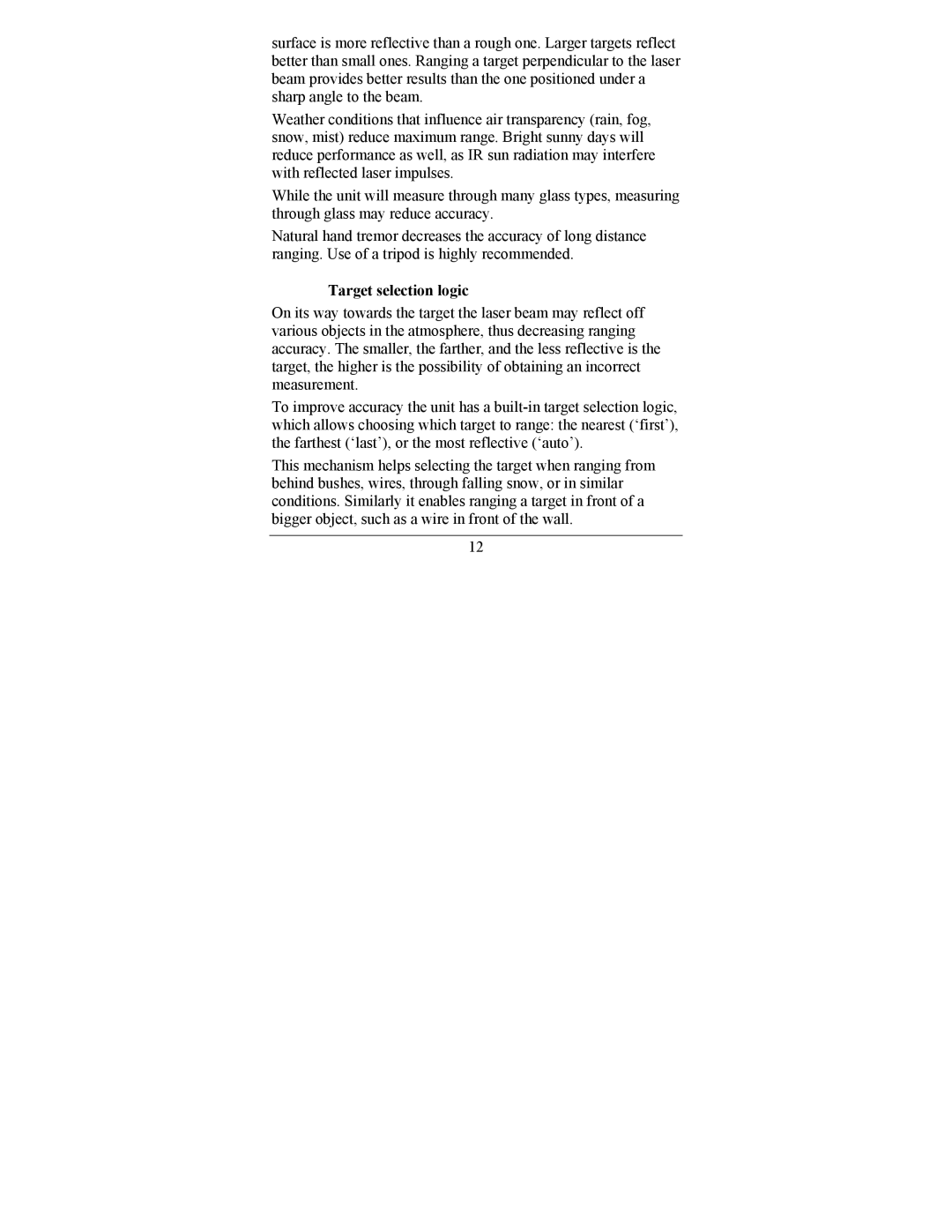surface is more reflective than a rough one. Larger targets reflect better than small ones. Ranging a target perpendicular to the laser beam provides better results than the one positioned under a sharp angle to the beam.
Weather conditions that influence air transparency (rain, fog, snow, mist) reduce maximum range. Bright sunny days will reduce performance as well, as IR sun radiation may interfere with reflected laser impulses.
While the unit will measure through many glass types, measuring through glass may reduce accuracy.
Natural hand tremor decreases the accuracy of long distance ranging. Use of a tripod is highly recommended.
Target selection logic
On its way towards the target the laser beam may reflect off various objects in the atmosphere, thus decreasing ranging accuracy. The smaller, the farther, and the less reflective is the target, the higher is the possibility of obtaining an incorrect measurement.
To improve accuracy the unit has a
This mechanism helps selecting the target when ranging from behind bushes, wires, through falling snow, or in similar conditions. Similarly it enables ranging a target in front of a bigger object, such as a wire in front of the wall.
12
